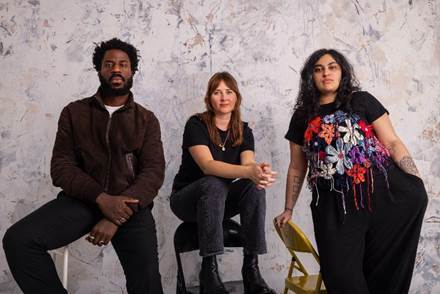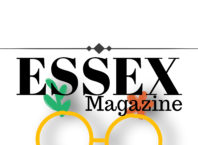Most Wanted Wines is launching their second Most Wanted Collective’; a series of limited edition labels for three of their most popular wines designed by artists from lesser-represented communities celebrating diversity through creativity.
After an incredibly successful launch of Collective 1.0 in October 2021, which featured labels created by 5 incredibly talented artists, the brand continues in its mission to combine great wine with original, contemporary and meaningful art, striving for less exclusivity and more inclusivity when it comes to the wine industry.
The labels have been designed for Most Wanted Collective 2.0 by three talented and diverse artists. Ana Curbelo’s artwork features on their Pinot Grigio, Tejumola Butler Adenuga’s artwork features on their Malbec and Anishika Khullar’s artwork features on their Malbec Rosé thanks to the support of Creative Debuts who curated a shortlist of artists from thousands of emerging talent from all over the world. Creative Debuts is an art platform that provides opportunity and support to thousands of emerging artists from all over the world.
After sourcing a number of artists for the campaign, the final three were selected by actor Russell Tovey and his ‘Talk Art’ co-host Gallerist Rob Diament.
Russell Tovey comments on the final selection process – “We chose the 3 artists because we felt their work would connect with diverse audiences and inspire people with their symbolic, captivating and striking artwork. Each artist has a very unique perspective and style which will create a very special series of designs for each wine bottle. From bold colour combinations to highly detailed, skilful drawings, we are so proud to be supporting emerging talent and sharing their stories with the world”
Artist 006. for Most Wanted Collective 2.0 – Ana Curbelo
image010.pngimage011.jpg
Ana Curbelo is an award winning illustrator and artist, whose work sets to challenge traditional depictions of women in art.
“The artwork features a portrait of a woman who embodies the characteristics of a good friend – direct, honest, and unafraid to speak her mind. She looks the viewer straight in the eye, as if in conversation with them, inviting them to interact openly.
The woman loosely holds a flower between her fingers. The line of her arm is also the stem of the flower, and the petals of the flower are shaped like a wine glass, evoking the sensory experience of drinking wine. The playfulness of these shapes adds a whimsical air to the overall composition.
Women have traditionally been objectified in the arts, and are often depicted as delicate and passive, their role to please the viewer’s gaze. However, the woman in the artwork challenges these stereotypes and invites the viewer to see her as a complex and multifaceted individual.
Overall, the artwork is a powerful composition that encourages viewers to engage in deeper conversations, challenge traditional depictions of women, and celebrate the joys of friendship and shared experiences over a glass of wine.”
Artist 007. for Most Wanted Collective 2.0 – Anshika Khullar
image012.pngimage013.jpg
Anishika Khullar is an Indian, non-binary transgender illustrator whose bold and vibrant work is packed full of visual metaphors and is largely character-driven with an interest in intersectional feminist narratives and socio-political themes
“This piece brings together the hopefulness of spring, a new start and the blooming of new flora and fauna, juxtaposed with and grounded by the desire for stability amongst all this new change.
Hardy motifs such as cauliflowers, as well as earthen pots and vases growing blooming flowers all invoke a feeling of rootedness and hopefulness that I often don’t feel, both as an immigrant and as someone who struggles with mental illness.
The house and key earring, represent the desire to belong somewhere, with the security provided by having your own home; something that is increasingly rare for people of my generation and younger, and particularly those that are marginalised.
The more security and stability a creative has, the greater their ability to cultivate their practice in new, thrilling directions. All through this is the constant risk of being burnt or burnt out, which as a young, marginalised creative in this industry is an all-too-common occurrence, often even expected in order to “make it”. But the way a creative practice can flourish and blossom when the creative is allowed time, space and abundance is genuinely magnificent, not just for the art and the culture, but, most importantly, for the artist too.’




